How Labubu seller Pop Mart seized a cultural moment to make billions
Pop Mart has been building on the success of the Labubu doll with new character lines and collaborations with established intellectual property. However, trends change and it remains to be seen if the company can keep up.
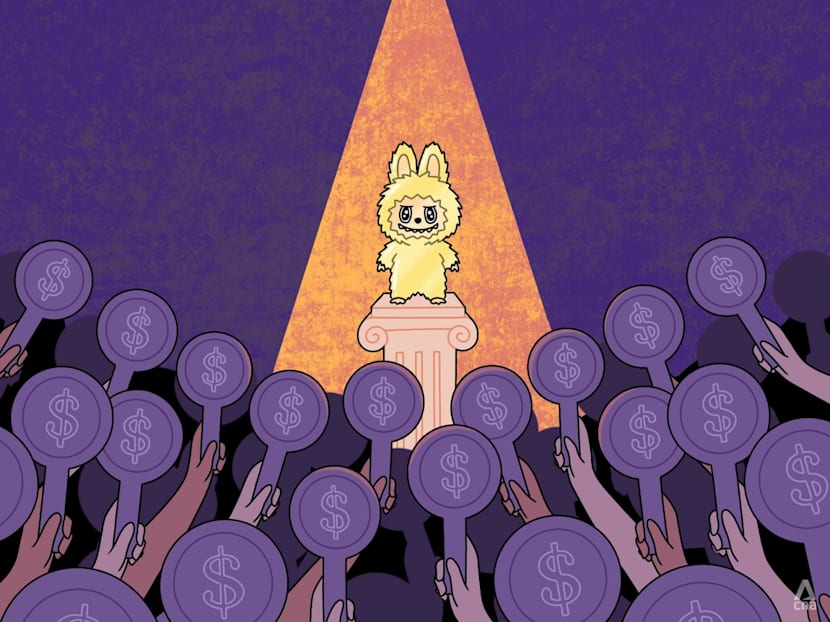
Analysts attribute Pop Mart's explosive success to factors such as the lottery-like thrill of its blind boxes and social media virality. (Illustration: CNA/Nurjannah Suhaimi)

This audio is generated by an AI tool.
Last August, Mr Terry Khoo headed to Marina Bay Sands Expo and Convention Centre before the crack of dawn, just for the Pop Toy Show, a convention for pop-culture toys and collectibles. He was determined to get his hands on the Merlion Labubu, a Singapore-exclusive edition of the popular Labubu doll.
The annual convention has been organised in Singapore since 2023 and in China since 2020 by Pop Mart, the company behind popular collectible toys, most notably the ubiquitous Labubu – a furry toy known for its iconic rabbit-like ears and mischievous, sharp-toothed grin.
Mr Khoo, a 29-year-old project manager, said: "I thought it was early but when I reached at 5am, I was already way at the back (of the queue). I was speaking to some people and some of them were there from as early as 3am."
He estimated that there were already 200 to 400 people ahead of him by the time he arrived, and the queue had snaked out of the convention centre and spilled onto the road.
Still, he waited in line for six hours, only to find that the launch of the limited edition toy was abruptly cancelled after a scuffle erupted between convention-goers over the collectible.
Although he has yet to acquire the Merlion Labubu, he now owns around 30 Pop Mart figurines, which he stores in two display cabinets – one at home and the other in his office.
Mr Khoo and other Labubu buyers have contributed to the runaway success of the Beijing-based Pop Mart, a company founded in 2010 that only recently became a household name when the Labubu craze erupted in early 2024.
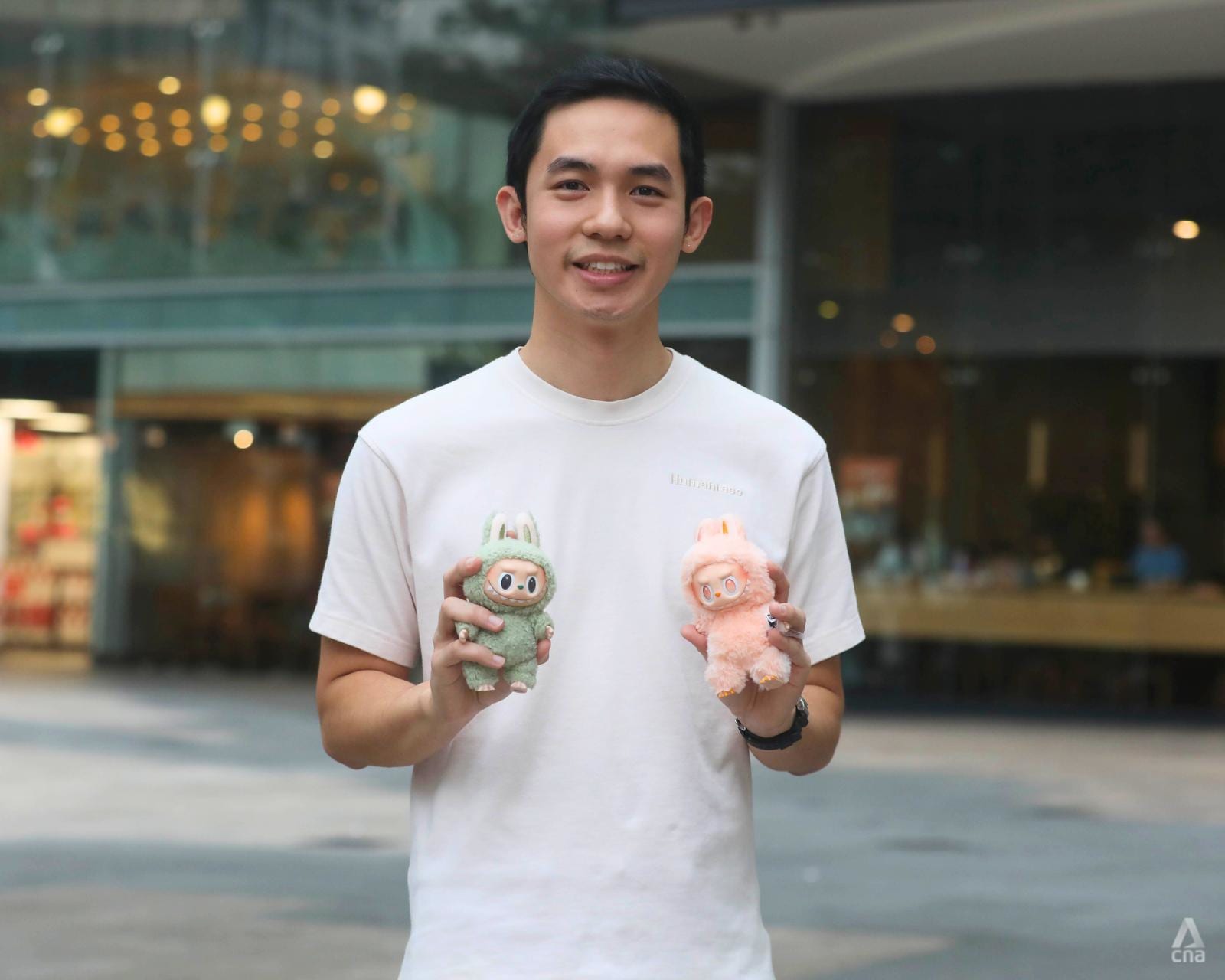
Ms Ripple Sim, for instance, has spent thousands of dollars to date on her Pop Mart collection. She has more than 100 items that include several popular characters such as Labubu, Twinkle Twinkle, Skullpanda and Dimoo.
The event stylist, 41, began collecting Pop Mart merchandise in August last year, saying she started because of the rising Labubu hype at the time, which played into her fear of missing out.
Ms Sim also films herself unboxing Pop Mart blind boxes live and posts these videos on her social media accounts.
"I love unboxing blind boxes as well as watching people unbox, so I decided I might as well live(stream) it, so anyone who's keen or free to watch can just join in the fun," she said.
To date, the most expensive Labubu toy she owns is a larger-sized "Zimomo Angel in Clouds", which she bought for more than S$300.
Her most precious one is a "Chestnut Cocoa" – a rare Secret V1 Labubu doll that has a one-in-72 chance of being found in a blind box – which she unboxed live on camera to the delight of viewers tuning into her livestream.
"It's a core memory to have pulled a Secret on TikTok livestream, (especially) during the peak of the Labubu hype," Ms Sim said.
Blind-box toys are sold in sealed, opaque packaging that conceals the exact figurine within, making the box's content a mystery to buyers until opened.
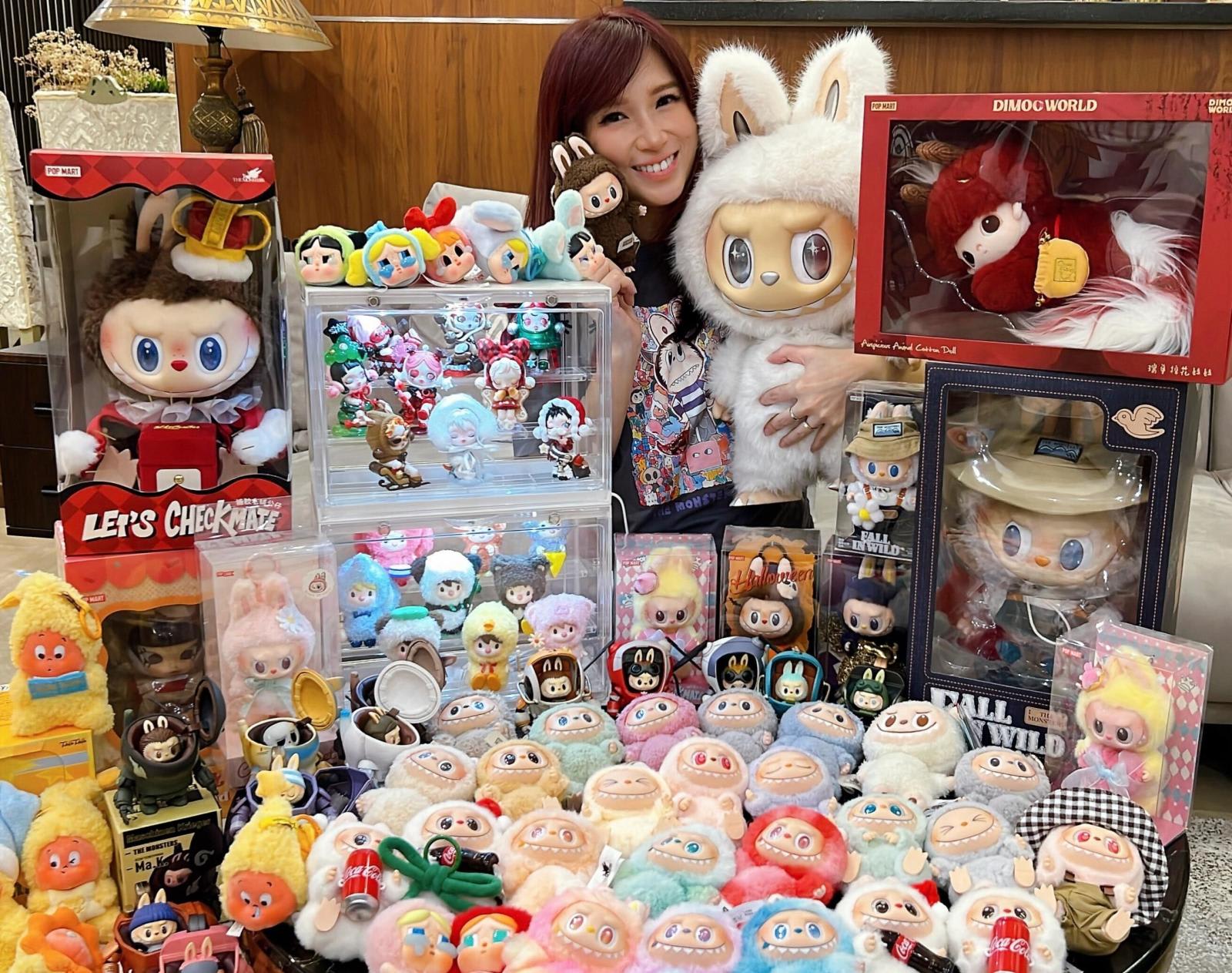
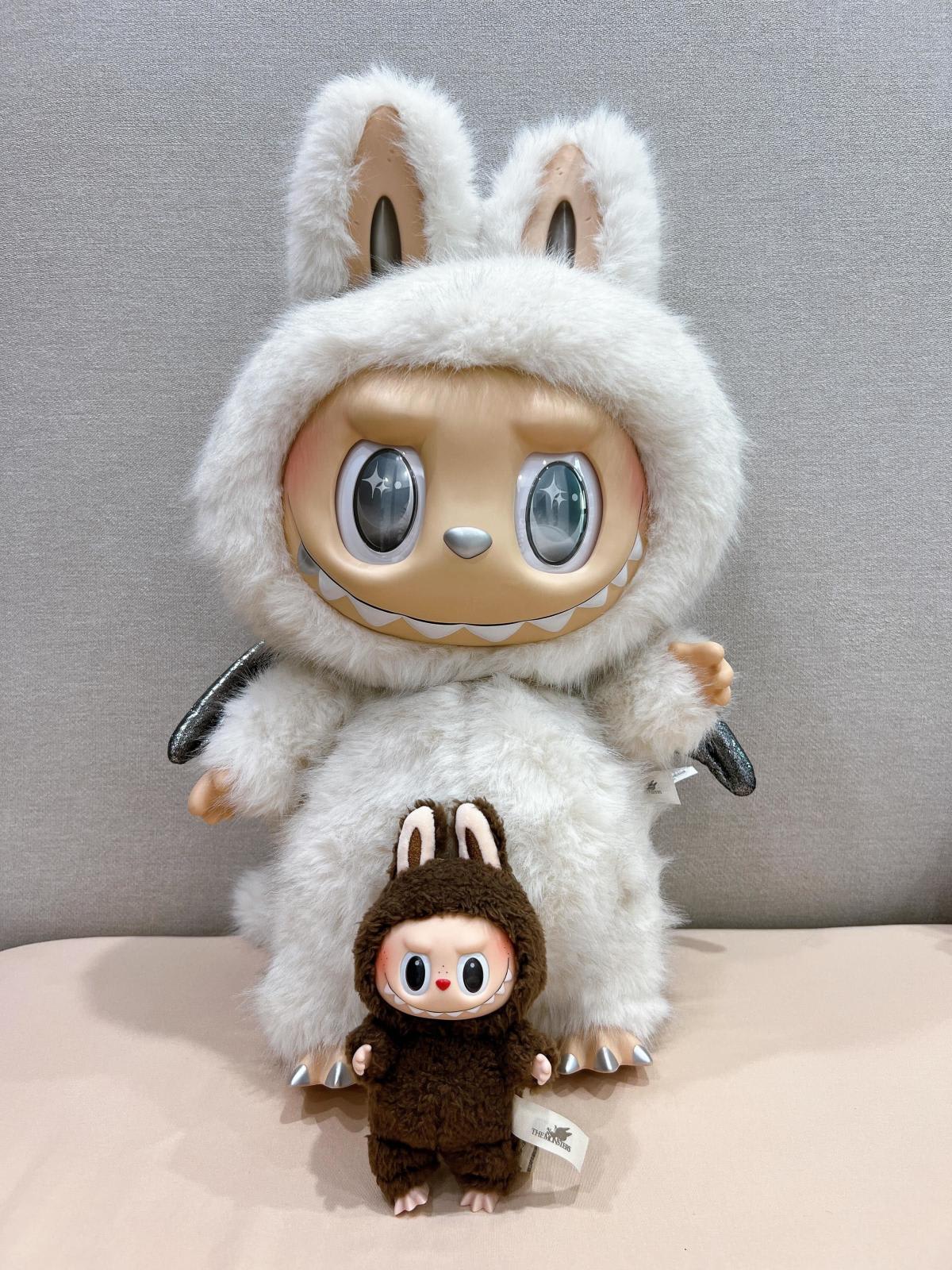
A third Pop Mart fan, a civil servant in her mid-30s who declined to give her name, began collecting Pop Mart figurines about a year ago. She has since amassed a collection of more than 300 items, which cost her about S$5,000 in total.
Her first blind-box figure was from the series called "Pucky the Feast", but her collection is now made up of various Pop Mart character lines, including Labubu, Skullpanda, Crybaby, Hirono, Dimoo and Molly. As long as she likes the design, it can join her collection.
"The thrill of blind boxes is in the unboxing process and not knowing what to expect."
She recalled feeling "quite disappointed" after failing to pull her desired toy from that first Pucky the Feast blind box, but added that this uncertainty was part of the fun.
Beyond the excitement of this pursuit, she has also found a sense of community among fellow Pop Mart collectors. She described the hobby as having evolved into more of a social pastime.
"Over time, it became less about the toys and more about its social aspects," she said.
"With friends and colleagues, it became a discussion topic. And within the Pop Mart community, there are also regulars who teach you tips on how to find your desired blind box figurine. You make new friends and learn from one another."
Such unwavering demand from fans have made Labubu a global phenomenon.
In August this year, Pop Mart reported an almost 400 per cent surge in net profit for the first half of the financial year, with revenue leaping 204.4 per cent year-on-year to 13.88 billion yuan (US$1.95 billion).
Yet, as successful as Pop Mart has become, it also remains polarising, as opinions on the toys it sells can be sharply divisive.
Many observers who are not swept up by the Labubu fever find themselves baffled: What exactly is driving this obsession with toys that are not even conventionally cute, to the point where collectors are willing to jostle or even turn violent over them?
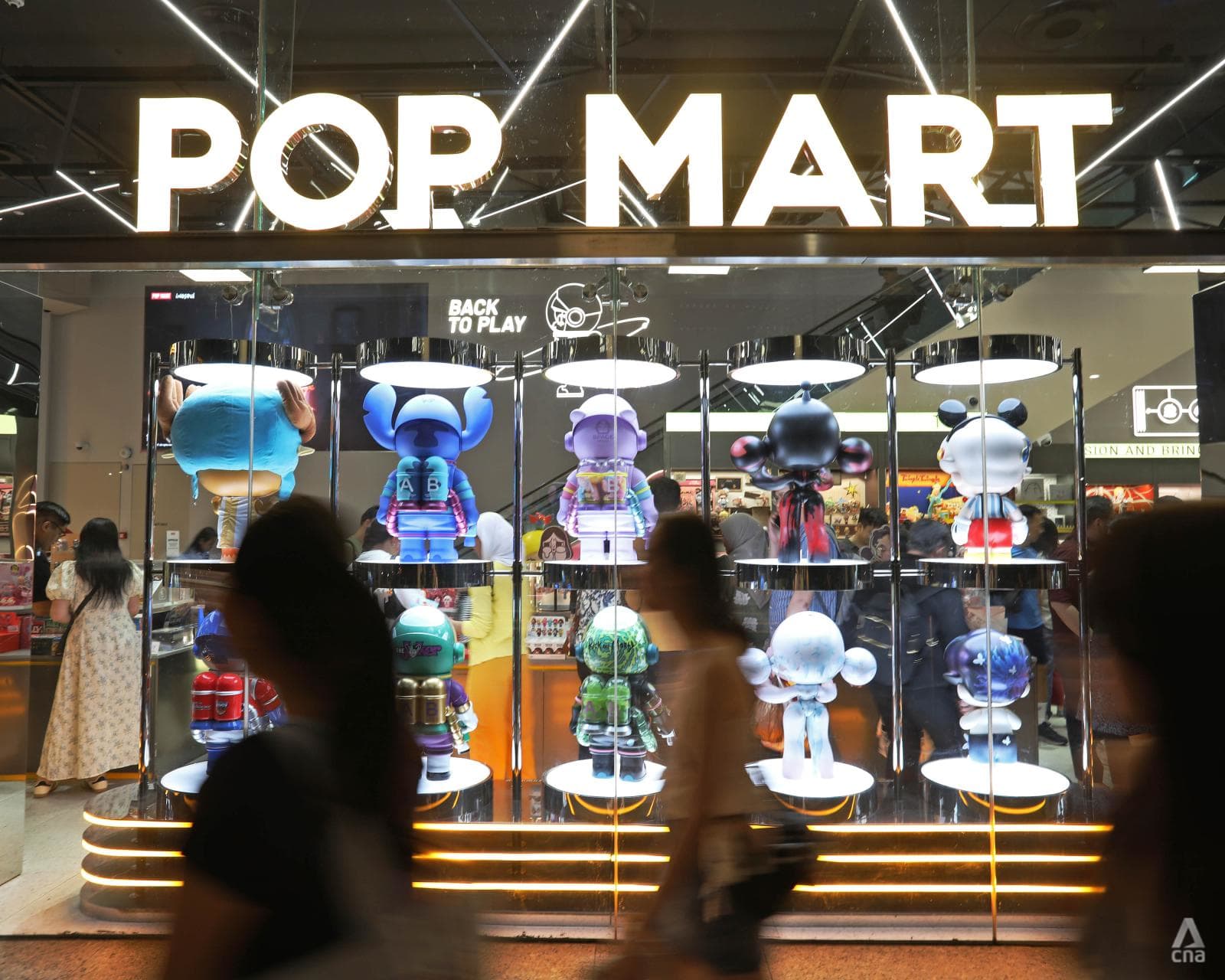
Dr Joicey Wei, an associate professor of marketing at the Singapore University of Social Sciences (SUSS), said: "To many people who don't understand the appeal, spending hundreds or even thousands of dollars on a plastic toy with no 'practical use' is seen as an irrational waste of money."
However, this view stands in stark contrast to the emotional and collectible value that Pop Mart enthusiasts seek, she added.
Earlier this week, the Chinese firm's shares plunged nearly 9 per cent, sparking debate over whether the bubble surrounding the brand's success might soon burst.
Commenting on this, Associate Professor Brian Lee, head of SUSS' communication programme, thinks that the brand is much stronger than critics say.
"The Labubu craze may have reached its peak and stabilised – and some even predicted that it is a 'billion-dollar bubble ready to burst' – but Pop Mart's business model seems to be built for sustainability," he said.
He noted that the company operates like a fashion brand, regularly releasing new series and limited editions to refresh demand and desirability.
"That said, its sustainability very much depends on its brand management strategy. And the deciding factor is the ability to maintain the perceived scarcity of its products and the consumers' psychological excitement in 'hunting for rarity'."
WHAT DRIVES POP MART'S SUCCESS
Founded in 2010 by Chinese businessman Wang Ning, Pop Mart initially flew under the radar until it introduced its first blind-box series in 2016 featuring Molly, a big-eyed character created by Hong Kong artist Kenny Wong.
The resulting sense of surprise and anticipation from opening blind boxes captivated consumers, turning Molly into Pop Mart's first breakthrough hit, even though the company was not the first to introduce the blind-box concept.
Still, it was not until Pop Mart launched its Labubu collectibles that the company's success was propelled to new heights.
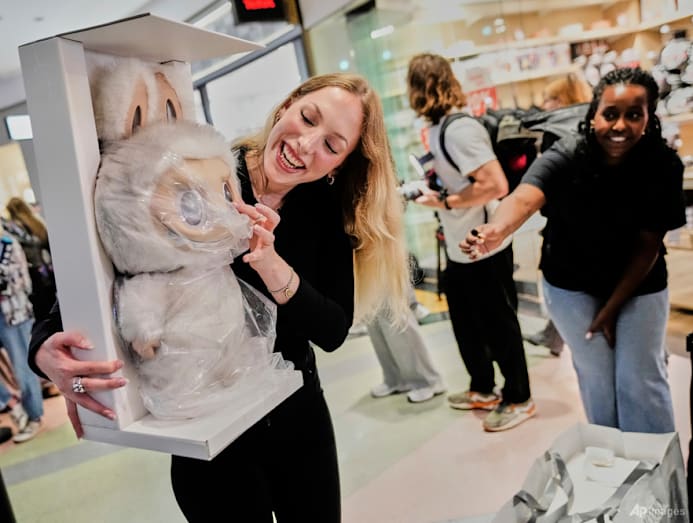
In 2019, the firm secured an exclusive licensing deal with Hong Kong illustrator and toy designer Lung Kasing, allowing it to produce plush toys based on characters from his children's book series The Monsters, including the now-famous Labubu. Despite this, the toys remained relatively niche for years.
All of that changed in April 2024, when Lisa – one of the world's biggest K-pop stars from the South Korean girl group Blackpink – posted images of Labubu merchandise on her Instagram account.
Since then, the figurines have been flying off shelves around the globe.
The toys have also gained a strong celebrity following, with American singer Rihanna, tennis star Naomi Osaka and former footballer David Beckham among those spotted with the dolls.
By the end of 2024, Pop Mart had 130 stores outside China, up from 80 the year before.
As of this August, the Chinese toy retailer has 571 stores worldwide – 40 of which opened in the first half of the year, news agency Reuters reported.
It also runs 2,597 "Robo Shops", which are automated vending machines selling its products, across 18 countries and regions.
As Dr Wei from SUSS put it: "(Pop Mart's success) is the result of a precise understanding of the consumer psychology, cultural trends and social behaviors of today's consumers."
Among the factors that have bolstered its success are:
the lottery-like thrill of blind boxes
social media algorithms amplifying celebrity endorsements
user-generated unboxing videos, which contribute to organic brand engagement and recognition
limited-edition releases that play on consumers' fear of missing out
the rise of the "kidulting" trend, where millennials in their 30s and Gen Zers in their 20s are spending on toys and other items that were traditionally marketed at children, as a way of looking for emotional comfort
Calling Pop Mart's use of the blind-box format a "masterstroke", Dr Shilpa Madan, an assistant professor of marketing at the Singapore Management University (SMU), said: "Pop Mart has turned Labubu into a growth engine by fusing cute aesthetics with casino-level unpredictability – surprise-box rarity, limited drops and social media unboxings that create an addictive loop of anticipation, reveal and community status.
"Unlike Pokemon or Hello Kitty, (Pop Mart) is made for algorithmic culture – short unboxing videos follow a clear sequence: the set-up, the reveal and the reaction. When a rare figure appears, the clip travels widely, quickly."
And as collectors have no control over the characters they pull from blind boxes, many end up making repeat purchases in their quest for specific figurines or to complete a set.
The thrill is further intensified by limited-edition drops, which play on consumers' mindset to score something rare, while fuelling a fear of missing out, experts said.
Pop Mart's rise in the internet age, along with its potential for social media virality, further drive an ongoing cycle of hype for current and upcoming products.
Dr Lee from SUSS said that social media has not only provided platforms for collectors and secondhand markets, but also enabled digital community-building.
"It goes beyond just a personal collection to become part of (one's) social identity online."
Agreeing, Dr Wei said that although celebrity endorsements significantly elevated Labubu's fashion status and brand value, user-generated social media content has further added a social dimension to Labubu and Pop Mart characters, transforming them from mere toys into a form of "social currency".
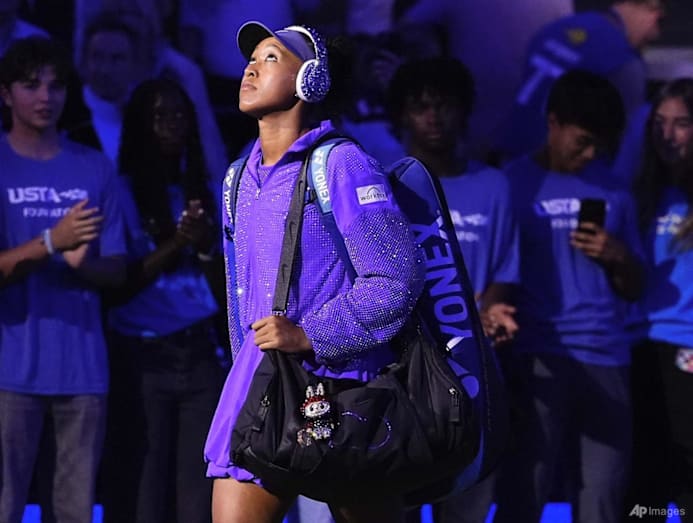
Priced between S$15 and S$30 a pop, Pop Mart's blind boxes may hardly feel like a pinch to adult buyers with higher disposable incomes, even in today's economic climate.
Dr Samer Elhajjar, a senior lecturer of marketing at the National University of Singapore (NUS) Business School, explained: "When money is tight, many consumers switch to affordable pick-me-ups rather than big splurges."
Media coverage has framed Labubu and related intellectual properties as small luxuries that still feel special, he said, adding that Pop Mart's merchandise fit precisely into this niche with their accessible price points.
This aligns with the behavioural economics theory known as the "lipstick effect", where consumers indulge in smaller treats during economic downturns or recessions.
In this sense, these blind boxes offer a "low-cost, high-reward emotional experience", Dr Wei said.
Pop Mart's success also plays into broader social and cultural trends, including the growing appeal of "kidulting", in which adults look for nostalgia, emotional comfort and familiarity or relief in a world filled with uncertainty and stress.
Dr Jeremy Sng, a lecturer from the Interdisciplinary Collaborative Core Office at the Nanyang Technological University (NTU), said: "Labubu exemplifies how adults turn to collectibles for stress relief and community, and how adults use items to construct (or) reinforce personal identity in anxious times."
The practice of relying on consumer goods to construct or reinforce one's identity is not new, Dr Sng noted, adding that material possessions often become extensions of a person's self, offering emotional comfort, a sense of control and continuity in the midst of life changes and transitions.
Even the "ugly-cute" appearance of Labubu and other Pop Mart characters adds to their charm, resonating with younger generations seeking something unconventional and offbeat.
Adjunct Lecturer Joe Escobedo from NUS Business School said: "Millennials and Gen Zers have more disposable income (than teenagers and past generations in their age range), are active online and embrace self-expression through quirky collectables. These factors create a perfect storm where Pop Mart’s products double as both personal identity statements and social media currency."
Agreeing, Dr Wei said that Labubu's off-kilter, 'ugly-cute' aesthetic matches Gen Z's ironic or individualist style.
She also said that the character's "seemingly weird but charming" design disrupts the traditional toy industry's preference for conventionally cute or attractive visuals.
And Pop Mart has not rested on its laurels or relied solely on Labubu's success.
The firm has diversified into other toy lines – including the Crybaby, Skullpanda and Dimoo series, each with its own dedicated following – and collaborated with established intellectual properties such as Harry Potter and SpongeBob SquarePants.
"Instead of betting on a single intellectual property, Pop Mart has built a vast matrix of intellectual properties and it releases new series at an incredibly fast pace," Dr Wei said. "This not only diversifies risk but also maintains market freshness and keeps consumers continuously engaged."
Several fans who initially frequented Pop Mart for Labubu have since become collectors of these other characters as well.
This was the case for 34-year-old nail artist Ellvy Nguyen, who began collecting Labubu figurines last year but eventually switched her attention to other Pop Mart characters such as Crybaby and Skullpanda, because she did not like the later Labubu releases.
To date, she has spent more than S$2,000 accumulating more than 50 Pop Mart items.
Another collector, the civil servant who declined to be named, said: "The appeal is that (Pop Mart's) offerings are very fast-changing and there are many intellectual properties to choose from, which keeps things fresh and exciting. It is also mass market, which makes re-selling a figurine you don't really fancy much easier."
WHY OPINIONS ON POP MART ARE SO DIVIDED
Pop Mart figurine collector Isabel Thum, 27, has amassed close to 100 dolls, including the Yuki, Molly and Skullpanda characters, but she knows that not everyone understands the craze.
An executive working in the fast-moving consumer goods industry, she said: "There will be people who appreciate it and those who don't. And those who don't appreciate it find that it's a waste of money, (saying it's) just plastic figurines for S$15.90."
Another collector, the civil servant who has more than 300 items, said: "Non-collectors would say they rather spend the money on a good meal or a holiday, but i think everyone finds joy (or) value in different things. If i won't judge you for spending S$500 on an omakase (meal), then neither should you judge me for my collection."
Indeed, the devoted following that has coalesced around Labubu and other Pop Mart toys has been difficult for outsiders to grasp, even though collecting prized products as a hobby has been around for decades.
After all, it is common enough to hear of enthusiasts who collect sneakers, luxury watches or rare wines. Even in the world of toys and childhood collectibles, there are those who collect superhero figurines, Pokemon toys and trading cards.
Such collections don't typically raise eyebrows, and are sometimes even seen as aspirational. Not so when it comes to Pop Mart, whose success has even sparked commentaries across international media on capitalism run amok and the perceived decline of culture.
Analysts attributed this divisiveness to various factors – many of them closely tied to the very characteristics that make Pop Mart appealing, such as its unconventional aesthetics, blind-box mechanics and perceived lack of cultural heritage.
For fans, the Labubu's "ugly-cute" aesthetic is a taste signal and the blind-box suspense is fun and community-building, Dr Madan from SMU said.
"For non-collectors, the same features are nonsensical: it looks menacing rather than charming; the blind-box chase looks gambling-adjacent; and because Labubu rides on bags, desks and trains, it invites public eye-rolls about paying so much for plastic."
Dr Lee from SUSS noted that traditional collectibles usually have good craftsmanship, brand prestige or even historical significance.
"But the Labubu's value proposition is entirely subjective. Not to mention the blind-box mechanism, which is often criticised as something similar to gambling. That makes it hard for the non-collectors to stomach."
Traditional collectibles such as stamps or even Pokemon cards have longer histories of cultural acceptance, the experts said.
Dr Madan said: "Pokemon has gameplay, a metagame and intergenerational nostalgia; stamps have catalogs, art, history, provenance and transparent rarity. Those heritage mechanics make the spending legible – even respectable."
However, this very lack of heritage could also be precisely what gives Pop Mart toys their appeal.
Dr Sng from NTU explained that, unlike superhero figurines or similar collectibles that depend heavily on franchise loyalty, Labubu and other Pop Mart characters' lack of ties to established nostalgic intellectual properties means that they have greater potential for broad-based appeal, rather than being restricted to a specific fandom.
Agreeing, Dr Wei said: "Unlike the strong narrative-driven intellectual properties of companies like Disney, Pop Mart's core characters like Molly and Labubu do not have grand world-building or complex backstories.
"This intentional 'blank space' provides enormous room for consumers to project their own emotions. Each figure's specific design, expression and accessories become vessels for feeling, allowing consumers to assign unique meanings based on their own experiences and imagination, thereby forging a deep, personal connection."
WILL THE POP MART BUBBLE BURST?
Despite Pop Mart's soaring popularity and savvy strategies, risks remain. Cracks have begun to surface, raising questions over how long the craze can be sustained.
Earlier this week, Pop Mart International Group's shares plunged nearly 9 per cent, marking the steepest drop since April.
Bloomberg News reported on Tuesday (Sep 16) that the share-price slump came after a pessimistic assessment of Pop Mart's outlook by American multinational finance corporation JPMorgan Chase & Co on Sep 14, sparking a sell-off that wiped out nearly a quarter of its value – just three weeks after it had reached a record high.
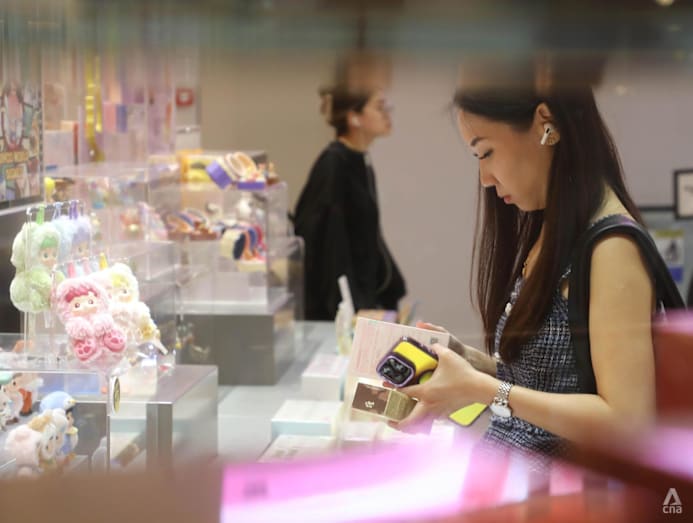
On the potential threats that might eventually burst the bubble, analysts pointed to factors such as stricter regulatory scrutiny, waning consumer fads and the emergence of counterfeits such as Lafufu, which could dilute the brand's appeal or harm perceptions of its product quality.
Dr Madan from SMU said: "There are risk factors that Pop Mart must consider, both from a consumer behavior point of view and a larger macro-environmental point of view. Over time, consumer desirability can fall dramatically if new silhouettes, storylines or collaborations are not introduced.
Most importantly, she added, regulatory scrutiny of gambling-like mechanics may threaten Pop Mart's core business model, and counterfeits strongly risk diluting its brand equity.
In June, a commentary published in the People's Daily, the flagship newspaper of the Chinese Communist Party, called for stricter regulation of blind-box toys and mystery trading cards, arguing that current business models could easily lead minors into addictive spending habits.
Currently, the Chinese government has prohibited the sale of blind boxes to children under the age of eight, on the grounds that there are concerns about potential addiction.
This regulation is part of broader guidelines introduced by China's State Administration for Market Regulation, which also specify that sellers must not use blind boxes to facilitate or conceal gambling activities.
In Singapore, people taking part in similar gambling-like activities – such as paying for spins on a wheel during social media livestreams for a chance to win coveted rare editions of Labubu or other toys – could face charges and conviction under the Gambling Control Act.
Moreover, much of Pop Mart's popularity hinges on trends – whether driven by social media or the kidulting phenomenon – and trends inevitably fade. Any shift in these consumption patterns could burst the bubble of Pop Mart’s current success, analysts said.
This risk could be mitigated if the company continues to innovate and regularly introduces new toy lines to sustain consumer interest and keep collectors engaged, they added.
This aligns with Pop Mart's stated priority: that investment in research, development and innovation would be "more crucial than before" in 2025 to sustain sales momentum.
Timing also plays a part, evidenced by Labubu's meteoric rise to fame nearly a decade after Mr Lung first created the illustrated children's book series in 2015, sparked by viral social media posts from Blackpink's Lisa.
For now, the jury is still out. Some fans acknowledge that collecting may just be a passing phase, while others say they are enjoying the hobby and living in the moment.
Unless something new excites me, I've moved on. People join in (the craze) for different reasons. Some love the process, some love the item, some resell. For me, it was the thrill of the hunt and that was fun while it lasted.
For 45-year-old Mechie Yu, who began collecting Pop Mart characters in January last year, she said: "When I first saw Labubu, I thought it was cute. The fact that it's hard to get made it even more desirable."
At one point, when the Pop Mart Ion Orchard store opened, Ms Yu said she found herself visiting the shop almost daily, sometimes even up to three times in a day.
"I'd pass by after exiting the MRT, again on my way back and even before heading home, just to check if there was a drop (of new items). Since they don't announce drops, I didn't want to miss out," she said.
Eventually, however, the excitement faded.
"At first, it felt fun and special because it was hard to get. But once everyone could get one, I lost some interest. I'm over Labubu now since it became too common, and I gave most of them away," Ms Yu said, adding that she has retained only a small collection, including the Singapore-exclusive Merlion Labubu.
"Unless something new excites me, I've moved on. People join in (the craze) for different reasons. Some love the process, some love the item, some resell. For me, it was the thrill of the hunt and that was fun while it lasted."
Mr Khoo who queued to get the Merlion Labubu said: "I was foreseeing that the V3 (series of Labubu) would cause sales to drop, because the design was not quite the usual since they coloured the Labubu. But somehow, when they released it, it surpassed my expectations. So maybe in another year or two, (the trend) will still continue."
CNA TODAY has reached out to Pop Mart for comment on its key markets, business priorities and plans for new characters or product lines ahead.
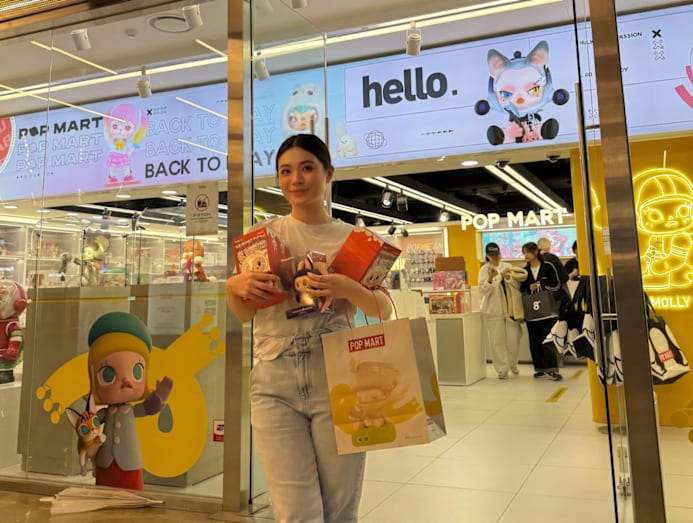
On the lookout for new designs, Ms SallyRose Mei described the products as "tiny pieces of pop art". She has spent around S$800 on about 36 Pop Mart figures.
The 33-year-old beauty and lifestyle content creator said: "At first, I thought the figures looked a bit odd, but they grew on me after I kept seeing them with influencers and bag resellers.
"Each design is quirky and a little mischievous, and the blind-box surprise makes it feel like opening a mini present every time. You get that kid-again excitement – only now, you have adult money to play with."
Those around her sometimes feel that her spending on Pop Mart is a "total waste".
"People sometimes ask if the hype will fade like Bearbricks. I just laugh. Trends come and go, but I’m having fun right now," Ms Mei said.
"Life doesn't always have to make sense to be enjoyable. Everyone has something that makes them smile, maybe a coffee, a snack or a tiny collectible. For me, it's these little figures in cute costumes.
"They're not serious, they don't define me, but they bring a small moment of joy – and isn't that enough sometimes?"













